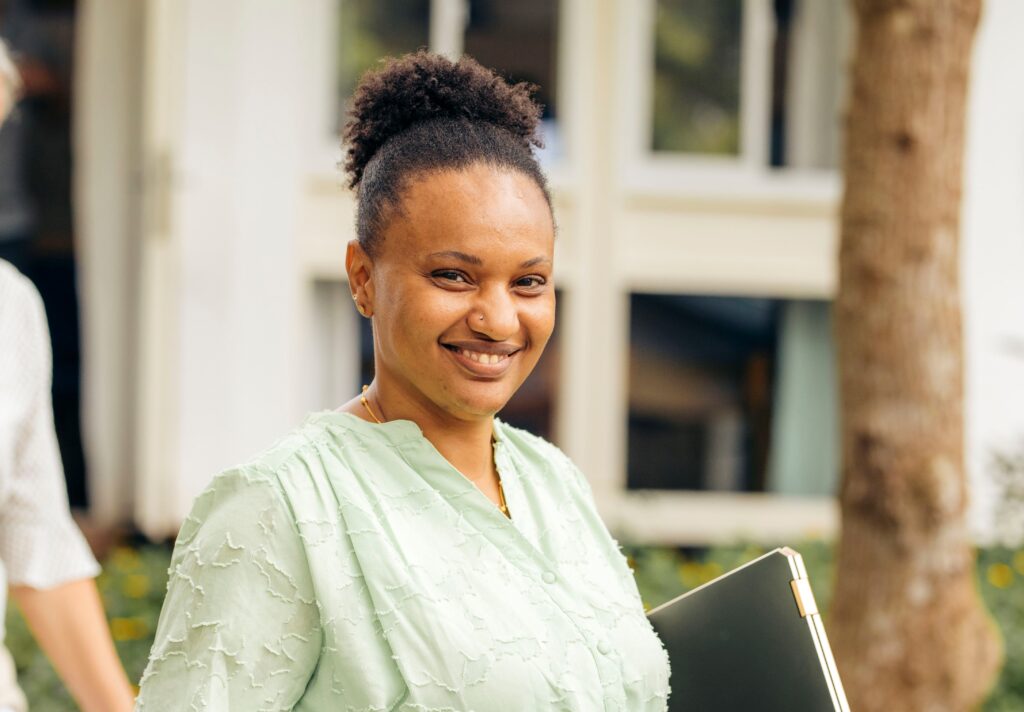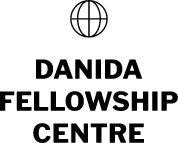Biogas production – a circular economy project. A story of change from Sokoine University of Agriculture
15-01-24

RESUME: High tech or low tech? This is my personal story about how I became involved in developing a biogas digester adapted to local conditions in Tanzania. One of the goals of the Building Stronger Universities circular economy programme at Tanzania’s Sokoine University of Agriculture (SUA) was to develop an economical way of producing bioenergy for small-scale farmers. This should be done by recycling waste from animal and crop production, and thereby reduce greenhouse gas emissions. The SUA team was invited to Denmark to see how things are done there. The Danish biogas plants were very efficient and very high-tech – they used very big tanks made of heavy-duty materials and pumps that required electricity – and were therefore far too sophisticated to use as a model back home. Nevertheless, they provided the inspiration that we needed to develop a system that would appeal to local farmers. The digester we designed was for use above the ground. Instead of heavy-duty iron tanks and piping, we used plastic polytanks and polypipes with manual feeding and gravitational flow so there was no need for electricity. We found solar powered temperature sensors that were simple to install. We think that we at last have a digester model that bypasses the limitations posed by a modest economy and fragile energy infrastructure and one that farmers can learn from and adopt. Furthermore, we can also use it for our students and our research.
By Dr Amina A. Hamad (PhD), Assistant Lecturer, Sokoine University of Agriculture, Morogoro, Tanzania
In September 2021, I received a call from Prof. Anthony Sangeda, coordinator of the Building Stronger Universities (BSU) programme at Sokoine University of Agriculture (SUA) in Morogoro, Tanzania. He invited me to join the circular economy programme under BSU as an expert in waste management. I did not know Prof. Sangeda at the time, but after he had introduced himself and the programme, I agreed. I was very excited.
The programme had four different thematic areas: aquaculture, agronomy, agribusiness, and animal science. Its overall purpose was to reduce the emission of greenhouse gases, one of the major contributors to climate change. The goal at the practical level was to develop an economical way of producing bioenergy by recycling waste from animal and crop production. When left unused and simply dumped, such waste decomposes and produces methane gas, one of the most potent greenhouse gases.
I got to know my future colleagues, Dr Maleko and Dr Sixbert at the end of 2021 on a visit to some farmers in the Kilimanjaro region. We were there to gain insight into how they related to the circular economy. Several farmers were actually practising circular economy principles by recycling their waste as animal feed, manure, or biogas. They did so, however, without being aware of how the circular economy helps reduce greenhouse gas emissions and thereby mitigates climate change,
I came to collaborate closely with Dr David Maleko from the animal science department. He works on pasture production. Dr Sixbert is a crop scientist. During that trip, I discovered how cool and how much fun they were to be with, but also how knowledgeable they were in the field of agriculture.
In October 2023, I met the rest of the project team as we were all going to Denmark to learn from our partners there. There were six of us. We came from different departments but we had the same goal and that was to learn as much as possible and develop a project implementation plan. By then I had a very good idea of how I was going to collaborate with Dr David and Prof. Morten from the University of Southern Denmark (SDU) as we had exchanged emails and made plans beforehand on how to develop a biodigester for the conversion of crop and animal waste into biogas.
Morten is a professor at the Department of Green Technology at SDU. He is a big man, very tall, with a piercing in his left ear. He shares Dr Maleko’s love of cracking jokes. There is no doubt that he is very experienced in the issues at stake in the programme. We had group meetings with other partners, and I started to understand how deeply our specific fields were connected. Dr Sixbert depended on the degassed manure produced by the digester that we were working on to grow crops so that he could observe whether or not there were any emissions from the fields. Dr Renalda from aquaculture also needed the degassed manure from the digester to grow maggots and worms for fishmeal and monitor their performance. I remember them both telling us that we had to speed up the construction of the digester as it was crucial for everybody’s work.
During our field visits in Denmark, we saw very efficient and very high tech biogas plants with very big tanks. They were made of heavy-duty materials and had pumps that required electricity. It was then that I began to wonder whether that sort of biogas plant would work back home. Our project was to benefit both small-scale farmers like the ones we met in Moshi and farmers with large estates. Could the farmers afford this kind of technology? The answer was no. In a place with a limited electricity supply and frequent power cuts would this kind of technology work? Hardly. Maybe with other power sources, but it would still be very difficult. We had to think about how to turn such sophisticated technology into something simple, economical, and easy to operate, something that would appeal to our local farmers. To develop the right solution was the assignment that we took back with us to Tanzania.
As a team, we established deep personal and professional relationships during our two-month stay in Denmark, and our good relations have continued since our return. When we got back, we had a clear idea of each other’s needs and what we had to do.
We held weekly online meetings with our colleagues in Denmark to discuss the design of the digester, keeping in mind what we had observed during our visit to Denmark. These Friday meetings were challenging at times due to our poor Internet connection.
Thankfully, we managed to come up with a design that was affordable, simple, and used local materials. So, instead of the heavy-duty iron tanks and piping that are the norm in Denmark, we used plastic polytanks and polypipes with manual feeding and gravitational flow so there was no need for electricity. We used solar powered temperature sensors that were simple to install. The digester we constructed was designed for use above ground and was therefore different from the one widely used by local farmers – an underground brick tank with structural, operational, and maintenance challenges.
In August, Morten and Benyamin came to Morogoro to kick-start the operation of the biodigester. Benyamin works with Morten at SDU and is from Iran. We fed the digester for the first time and made plans for its operation. After having been in operation for four weeks the digester was half full but no gas had been produced. This was alarming as we had expected gas to be produced in less than 21 days. We resealed the pipe joints, and, in the space of a few hours, we could see that the storage bag was inflating; gas was flowing. I sent a video of it working to Morten and Benyamin who had gone back to Denmark in the meantime. They were also delighted.
The digester is finally up and running. We still have our Friday meetings and continue to work together up to this very day. There are challenges to solve, but it is mostly a case of monitoring the efficiency of the digester and the waste materials we use to run it. We think that we have a digester model at last that farmers can learn from and adopt to reduce greenhouse gas emissions. We can also use it for our students and our research.
There is a Swahili saying, “hata mbuyu ulianza kama mchicha” meaning “even a baobab started like a leafy vegetable”. Such is the story about the development of our digester!
Edited by Kate Girvan
Go back to our stories